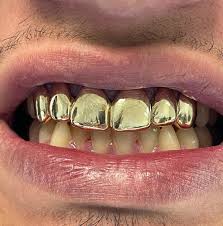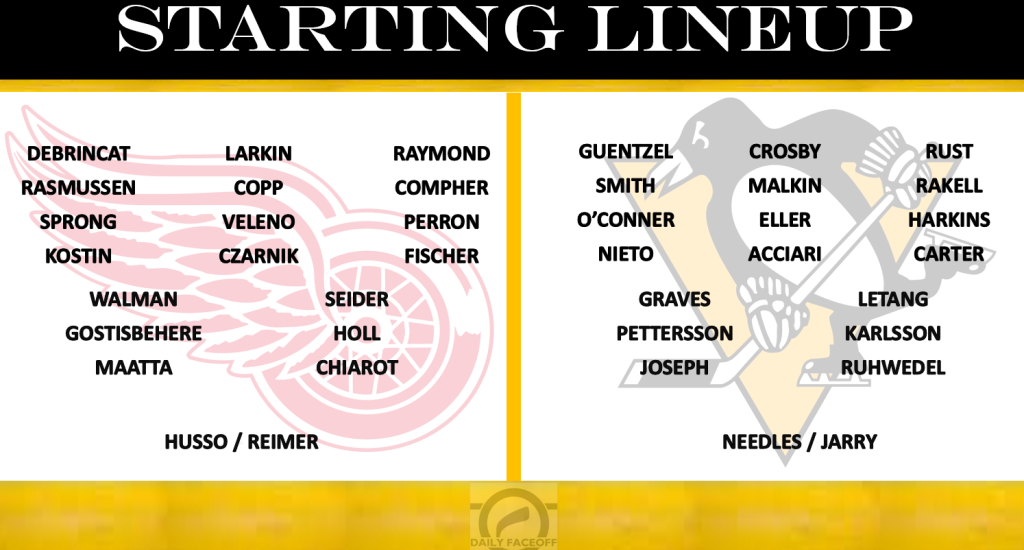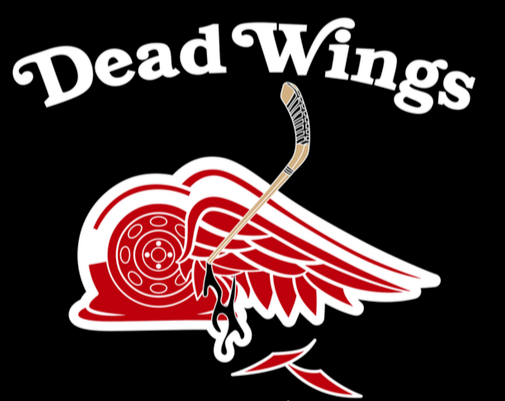

Three games down, seventy-nine (i.e., a lot) to go for both teams tonight as the Pittsburgh Penguins and the Detroit Red Wings face-off for the first of three scheduled games between the two teams. There will be quite the gap between this meeting and their next on St. Patrick’s Day in March, then just one month before their last meeting on April 11 in the waning days of the 2023-24 regular season schedule.

Through three games the Penguins have generally looked pretty good. They did drop their season opener to the Chicago Blackhawks 4-2 in a fashion that seemed to be giving us one of those TV recaps where they quickly show everything that happened last season (a blown late lead, an opposing goaltender standing on his head, an anemic-looking power-play), but since then they have played much better. First, a palate-cleansing 4-0 pasting in the home opener of their Metropolitan Division rivals, the Washington Capitals, then, in the second game of a back-to-back against a rested opponent, a stunning 5-2 victory over the Calgary Flames wherein Pittsburgh scored four unanswered goals in the first 14:14 of the third to roar back from being down a goal heading into the final period.

There are still a couple of things that could use improvement. The power-play has looked more competent if not generally better, but they’re still underperforming the expected goals versus the actual goals scored (2.65xG vs. 2GF on a little over 10.5 minutes of man advantage time). As I mentioned they looked a lot like last year’s Penguins in the first game against Chicago but the change in the next two games was dramatically positive, even if both of their two goals came against Washington. If they play more like they did against the Capitals and Flames, their performance should lead to more goals on the power-play and, naturally, more opportunities to win. The only concern here is that both goals have been scored by the first unit – again, more top-heavy production – and that quintet have played ~8.5 minutes compared to the second unit’s ~2 minutes.

On a related topic, and as anticipated, the bottom six group of forwards is going to be an ongoing concern. None of those players have notched a point to date and, perhaps most concerning, they are not completely meeting the expectation of holding down the fort defensively that we were led to believe that they would. With roughly even amounts of even-strength ice-time between Lars Eller’s third line and Jeff Carter’s fourth line, surprisingly it is the fourth line that has performed better in terms of limiting offense. Although Eller’s line has done a better job limiting shot attempts and scoring chances, Carter’s line has been more positive in terms of actual shot prevention and expected goal production. The silver lining is that neither line has been altogether disastrous yet, and maybe time will tell if they’ll see improvement overall (maybe some offense? please?), but unless head coach Mike Sullivan shuffles some of the top six players down the lineup, I wouldn’t anticipate any massive improvement any time soon.

The Detroit Red Wings headed into this season with the hope that their long-tended rebuilding plan will finally bear fruit. Beyond the Toronto Maple Leafs, the playoff race for the other 2+ berths for the Atlantic Division seems quite uncertain. Last year’s Cinderella Eastern Conference champions, the Florida Panthers, nevertheless barely made it into the playoffs at all last year and have started this season without Aaron Ekblad and Brandon Montour. Likewise the Tampa Bay Lightning are without Andrei Vasilevskiy until mid-November at the earliest. Unlike the above mentioned duo, the Boston Bruins, despite being without the services of retired captain Patrice Bergeron and David Krejci, have started the season off just fine. Regardless, things in the Atlantic Division are showing signs of being in transition.

That development is to the presumed benefit of the four up-and-coming teams in the division. The Buffalo Sabres seem most poised to climb into the Eastern Conference playoff picture, with their young and talented core figuring to be contending for the playoffs this season. Same with the Ottawa Senators, which are, in the early goings, reaping the rewards of two of their more high-profile acquisitions of late in veterans Jakob Chychrun and Vladimir Tarasenko in tandem with their maturing youngsters. Not to be forgotten are the Montreal Canadiens, who might still be a few years off from returning the relevance but are not to be taken for granted. Finally we have the Red Wings, who have spent a lot of their cap space and other assets over the last couple of years trying to make up for the production not being offered by the prospects they have drafted.

A few years ago there was some optimism that Detroit might be in lock-step with their peers in Buffalo and Ottawa in terms of being ready to make the jump into the postseason picture as the older teams started fading out of the limelight. But those older teams (Tampa Bay and Boston) are still quite good, both too good perhaps to be unseated from their pedestals, and even if they are it doesn’t seem like the Red Wings are quite as on par with their rivals as the Sabres and Senators. Unlike Buffalo (11) and Ottawa (9), Detroit has had to reinforce its squad from without, having just 5 of its own draftees on its current roster. Although their prospect pool still compares quite favorably with their up-and-coming peers, it’s not a good sign for this year that their prospects have lagged behind those two other teams. While Ottawa’s time appears to be now as far as their youngsters are concerned, Buffalo’s prospect pool is still widely regarded as the best in the League, which means they’re just getting started. Add the Canadiens to the equation, and things are looking concerning for Detroit and general manager Steve Yzerman’s so-called Yzer-plan.
KEEP ON ROLLIN’
